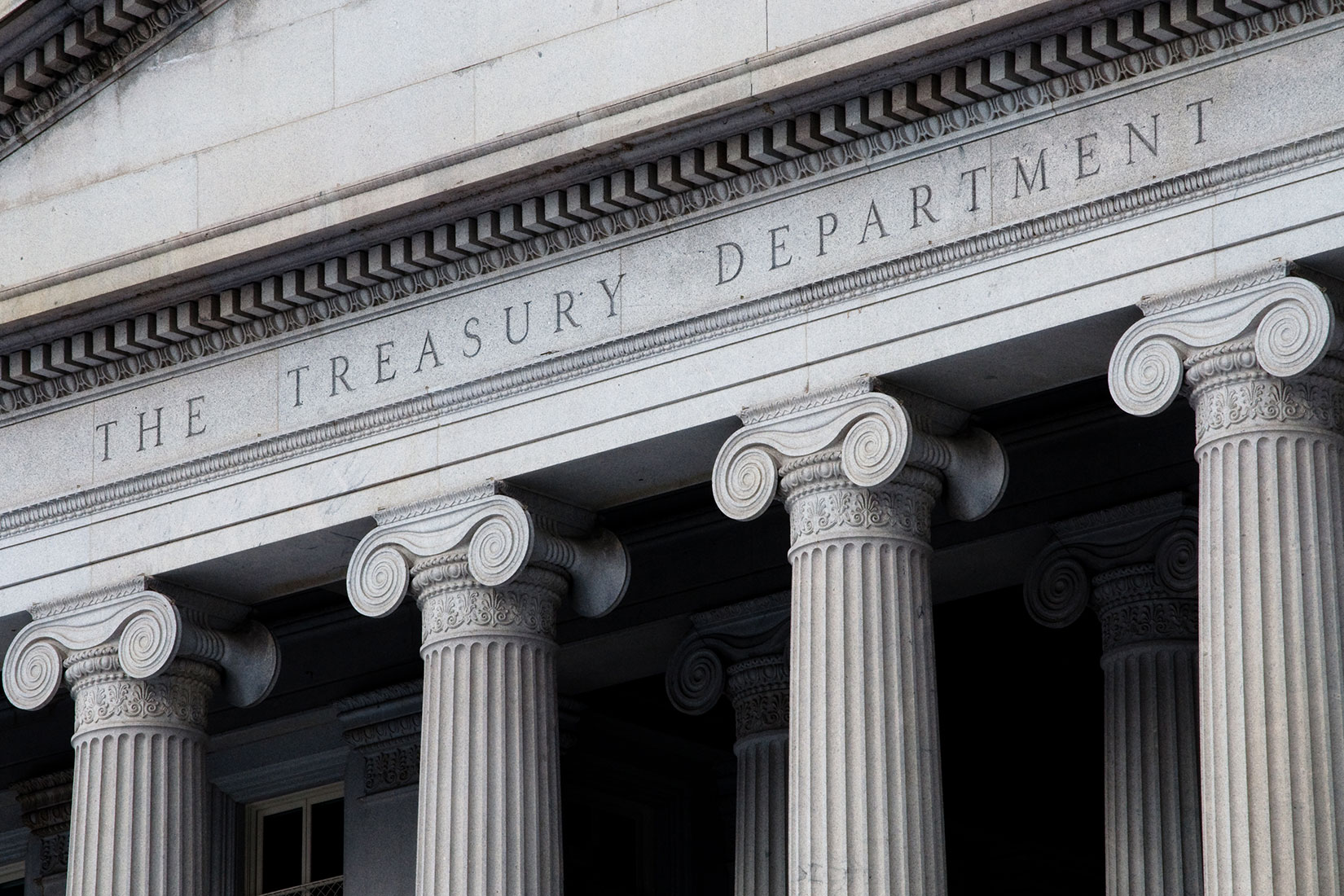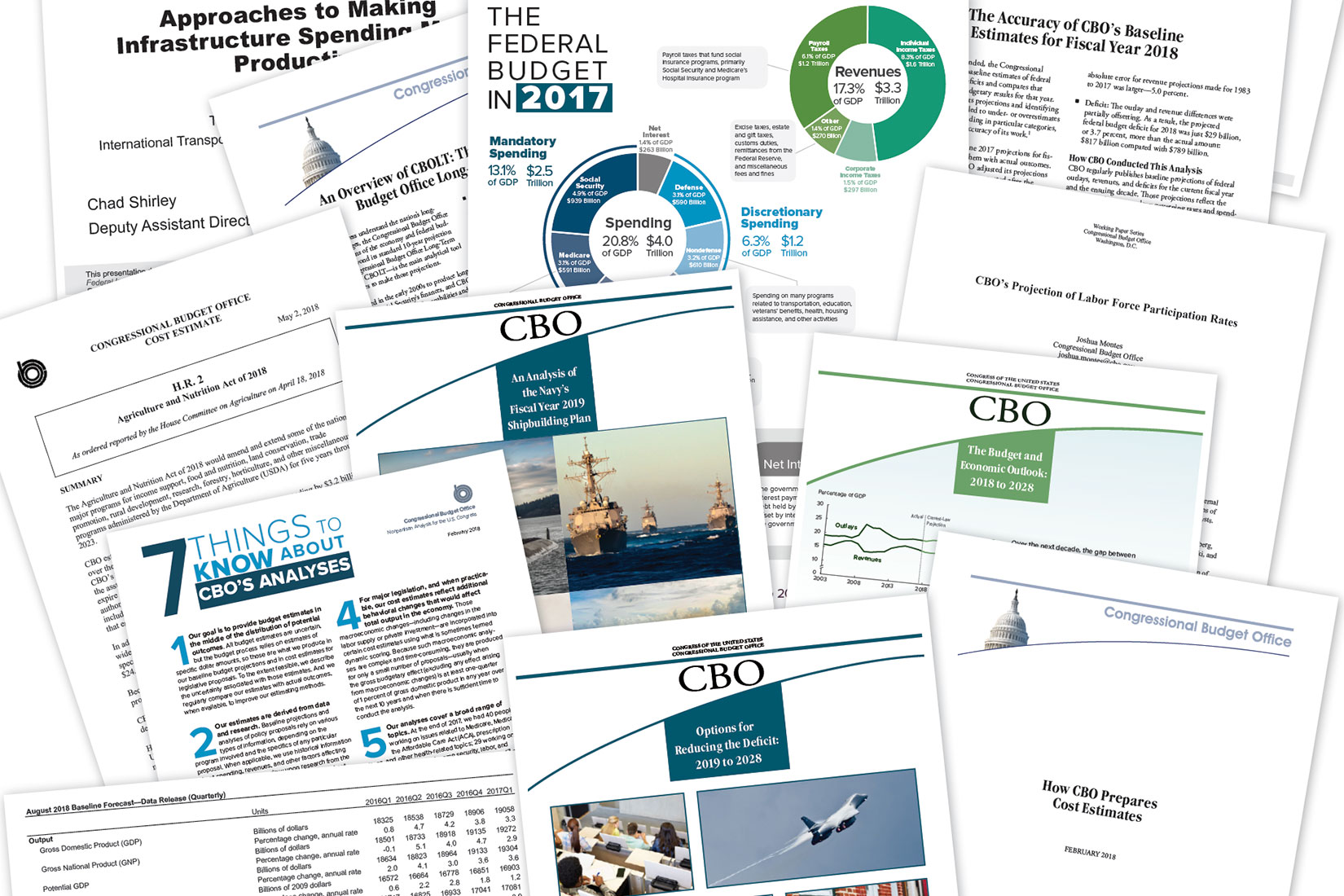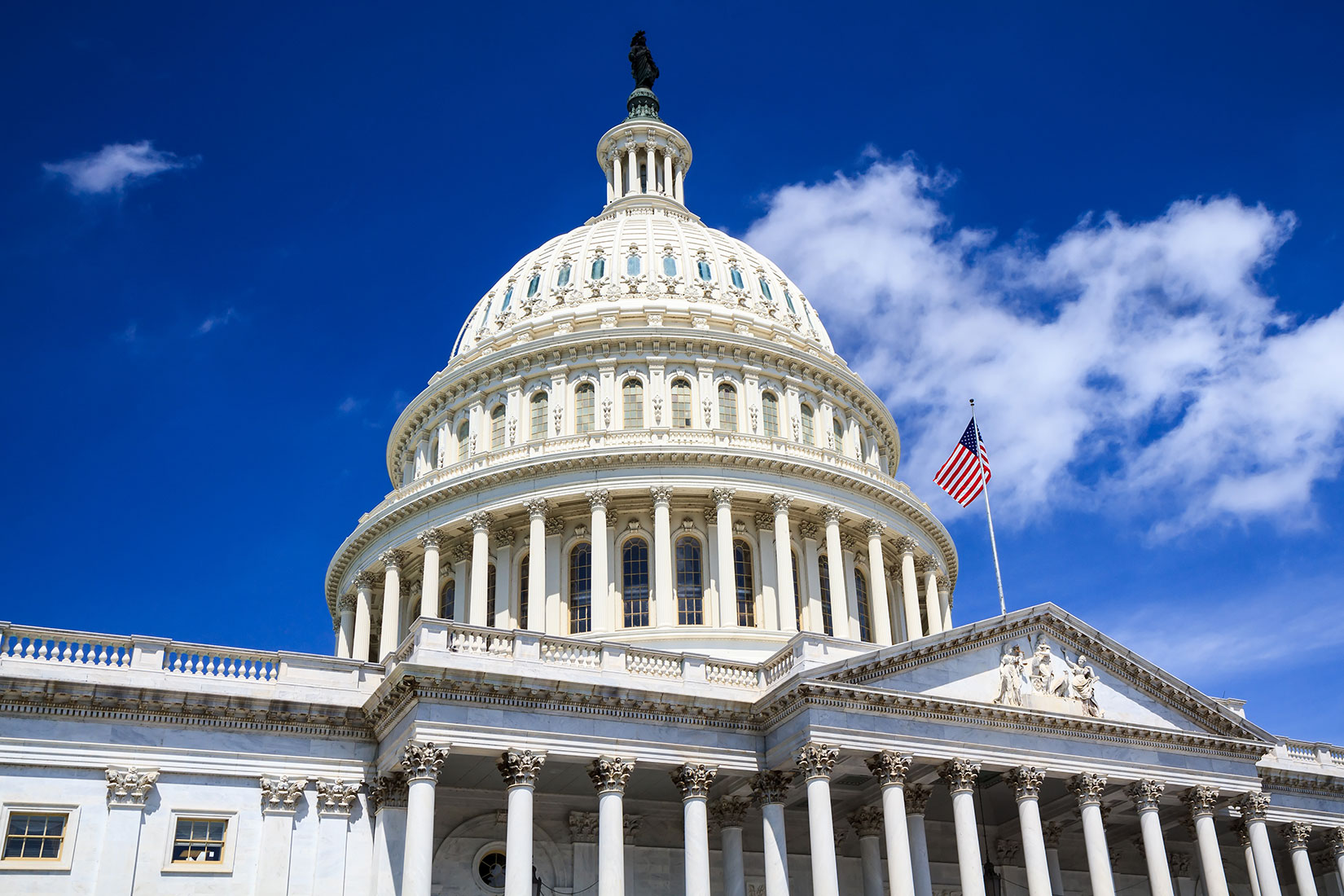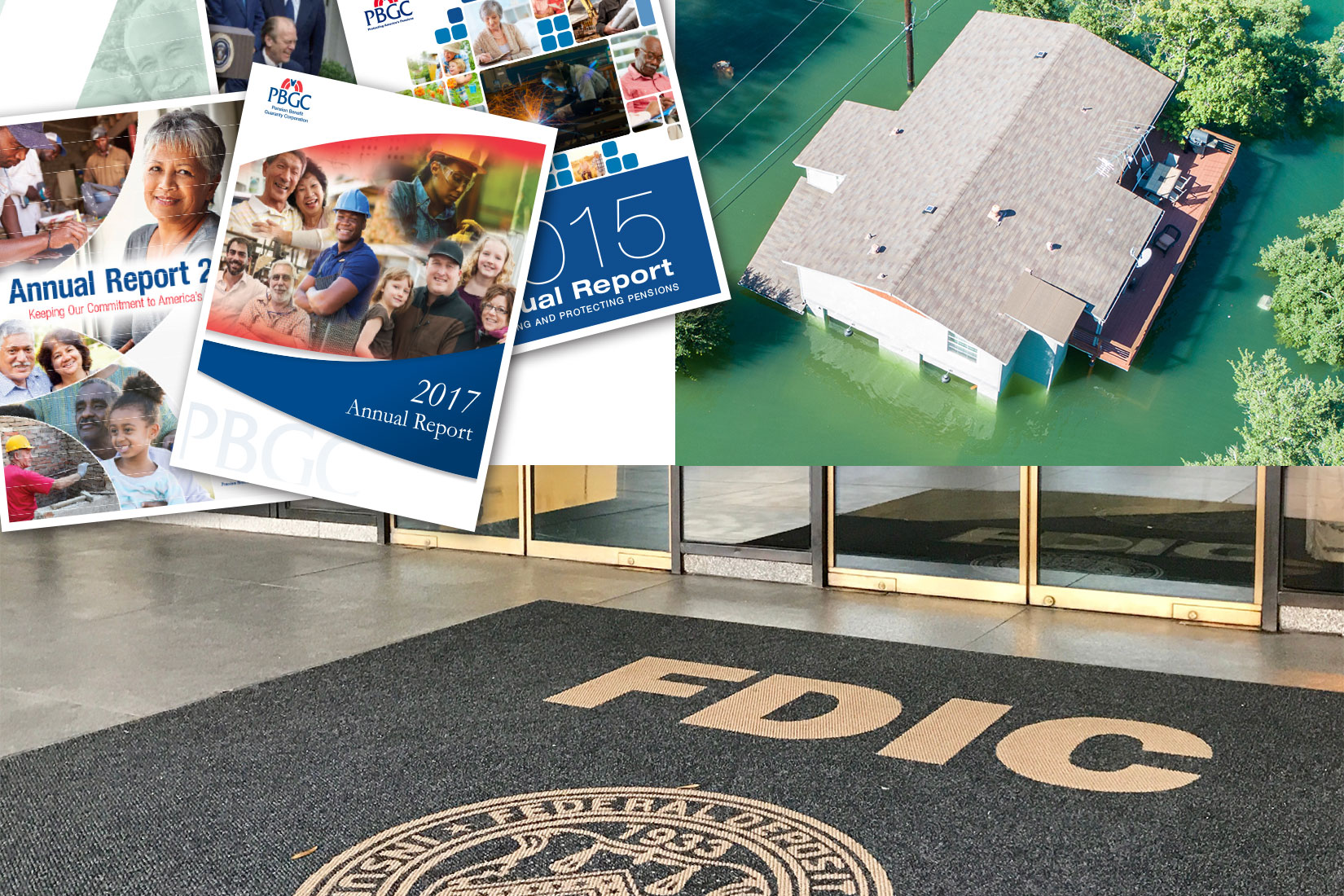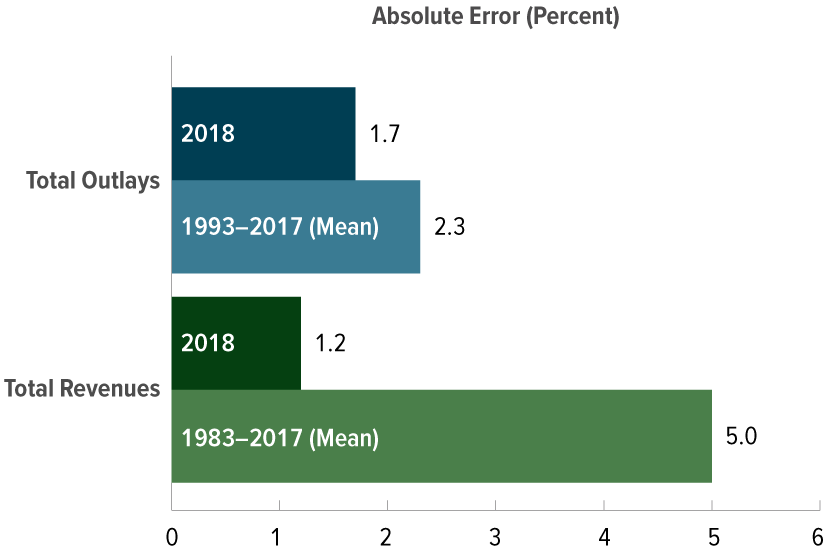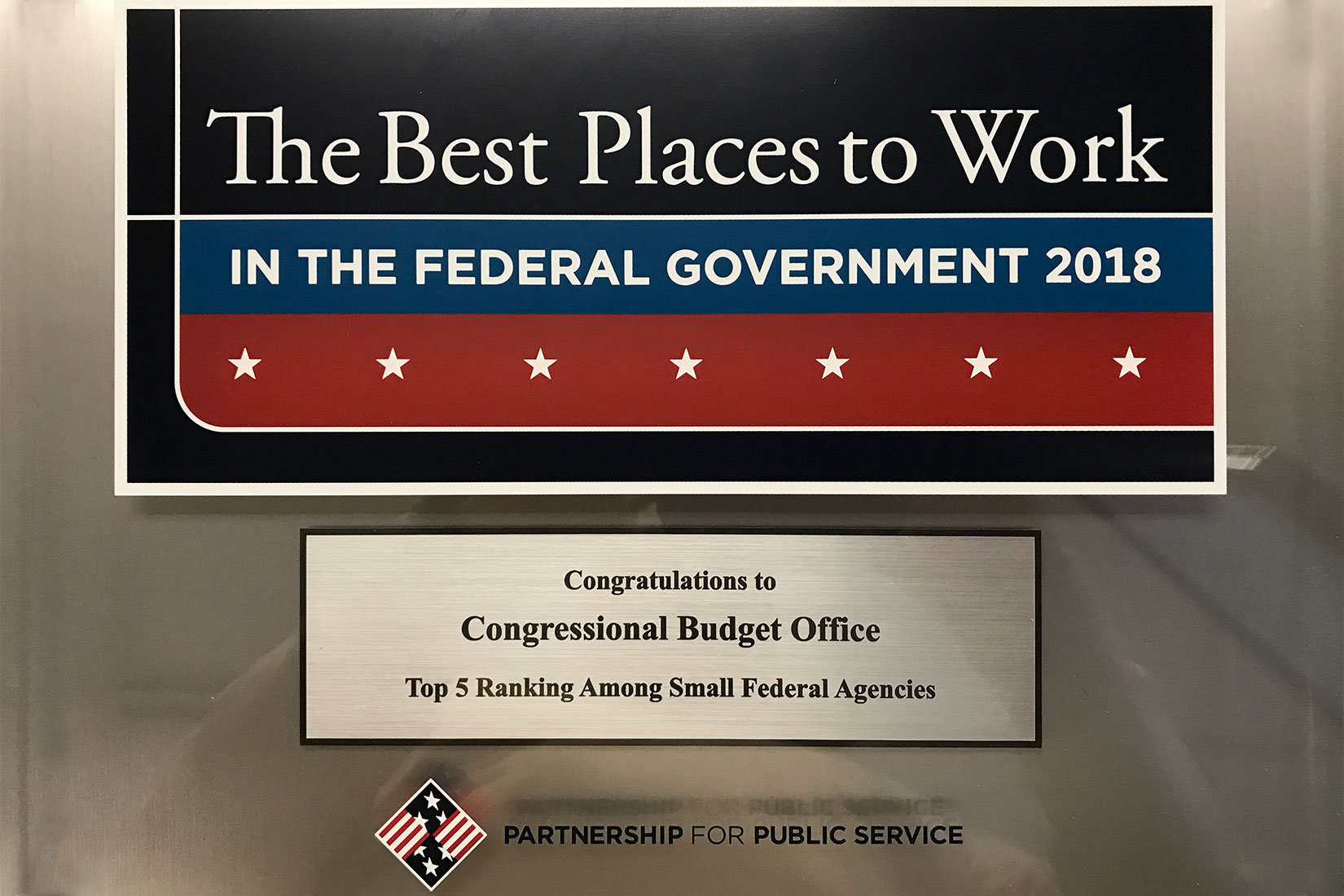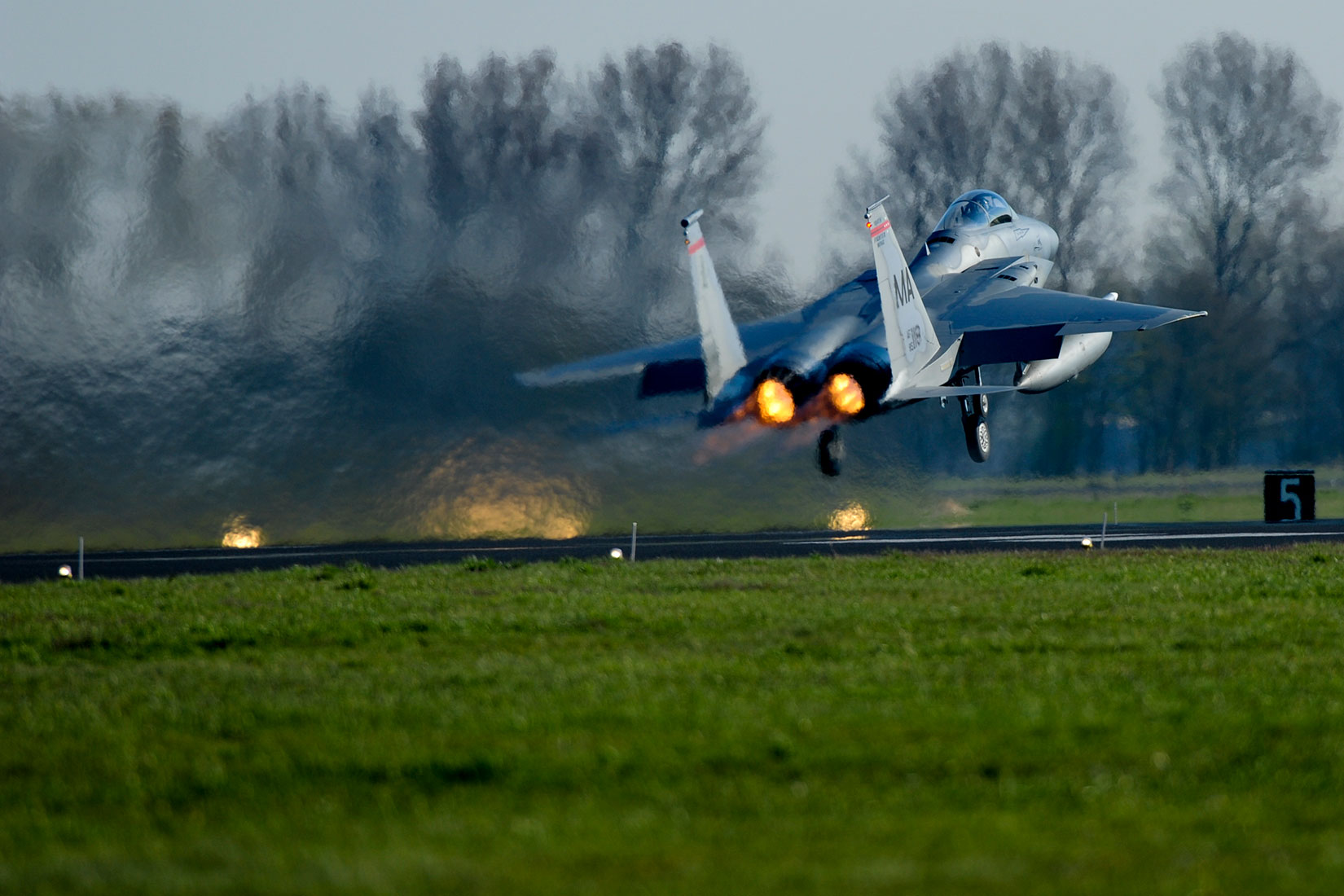For this report to be complete and as useful to the Congress as possible, the House and Senate Budget Committees have asked CBO to delay publishing it until it can fully reflect the funding provided in all 12 annual appropriation bills.
CBO Blog
The federal budget deficit was $317 billion for the first quarter of fiscal year 2019, CBO estimates, $92 billion more than the deficit recorded during the same period last year.
To help assess budgetary risks, CBO has projected spending by the Department of Veterans Affairs through 2028 under three scenarios, a modified version of CBO’s baseline and two other scenarios involving more rapid spending growth.
In 2018, CBO continued to bolster its efforts to be transparent. This report fulfills CBO’s requirement to provide plans for future transparency efforts within 90 days of the enactment of its appropriation for 2019.
In 2009, the Recovery Act boosted monthly benefits for SNAP. The resulting increase in spending on SNAP benefits from 2009 to 2013 was greater than CBO had estimated. This report discusses that underestimate and the reasons for it.
In this report, CBO assesses the usefulness of cash and accrual accounting for several federal insurance programs—including deposit, flood, and pension insurance—and considers ways to increase use of accrual measures in the budget process.
In its June 2017 projections, CBO overestimated federal outlays and revenues for fiscal year 2018 by 1.7 percent and 1.2 percent, respectively. The projected federal budget deficit for 2018 was 3.7 percent more than the actual amount.
This week, CBO was recognized by the Partnership for Public Service as one of the best places to work in the federal government. CBO ranked third among 29 agencies in the small-agency category.
Options for Reducing the Deficit: 2019 to 2028 is the latest edition of a report that CBO publishes periodically and describes 121 policy options that would decrease federal spending or increase federal revenues over the next decade.
CBO projects that the annual cost (in 2018 dollars) of replacing the aircraft in the current fleet, essentially one-for-one, would average $15 billion in the 2020s, $23 billion in the 2030s, and $15 billion in the 2040s.



